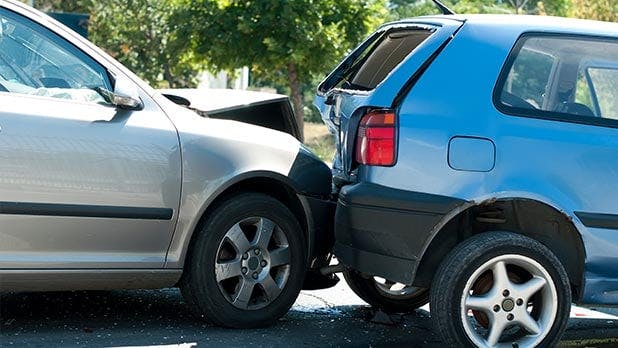What you need to know about adding a teenager to auto insurance policies
- Life events
- Auto insurance

In the blink of an eye, your baby is suddenly driving. It’s an exciting milestone for teens and parents, but it’s important to balance that excitement with an awareness of the responsibilities that come with driving. Adding your teenager to an auto insurance policy should be among the first, and most important, steps you take to prepare for this new stage of life. An insured driver protects themselves as well as others on the road.
When does my teen need car insurance?
Regulations vary by location, but generally young drivers are added to car insurance policies when they get their learners permit. Your licensing agency (DMV, RMV, SOS, etc.) can tell you exactly when it becomes necessary in your state – while learning, when beginning to drive independently or another point in the process. Driving without proper coverage can lead to significant consequences; it is important that you comply with legal requirements. It's also a good idea to check with your insurance company to understand their specific policies for young drivers.
Do I have to add my teen to my car insurance policy or should I buy a separate car insurance policy?
Whether you add your teenager to your auto insurance policy or purchase separate car insurance for them depends on several factors. Here are some considerations to help you make an informed decision:
- Existing policy – It's generally more convenient and cost-effective to add your teen driver to your existing policy. Adding them as an additional driver can be a simple process and may qualify you for multi-car discounts.
- Financial considerations – There’s no escaping the cost of adding a teen driver. It will very likely result in higher premiums for your policy. However, purchasing a separate policy for your teenager may be even more expensive. Separate policies for young drivers can have significantly higher rates, as they lack a driving history and the benefits of being part of a multi-driver household policy.
- Coverage needs – If your teen has their own vehicle registered in their name, it might make sense to purchase a separate car insurance policy for that vehicle to provide them with independent coverage and allow them to build their own insurance history.
- Financial independence – A teenager who is financially responsible for their own vehicle might prefer to have their own insurance policy to have more control over their coverage.
- Insurance company policies – Some insurance companies have specific policies regarding adding teen drivers, and they may require them to be added to the existing policy. Check with your insurance provider to understand their guidelines and requirements.
- Consultation with an insurance pro – Consider consulting with a professional like a member of the VIU by HUB Advisory Team. They can assess your specific situation, provide personalized advice and offer guidance on whether adding your teen to your policy or purchasing a separate policy is best for your family.
How do I add my teen to my auto insurance?
Reach out to your insurance company either by phone or through their website. Inform them that you would like to add your teenager as a driver to your existing car insurance policy and they can walk you through the process and answer any questions that you may have.
Enjoy the ride with the right auto insurance
How much coverage do you need for teen drivers?
Determining the appropriate auto insurance coverage when adding teen drivers to auto insurance policies involves several factors. Specific needs vary based on individual circumstances, but there are some general guidelines that will help you prepare for talking to your insurance company:
- State requirements – Start by understanding the minimum auto insurance coverage requirements mandated by your state. Most jurisdictions have legal requirements for liability coverage, including bodily injury and property damage liability. Make sure that your coverage meets or exceeds these minimum requirements.
- Liability coverage – This is essential for teen drivers. It protects you financially if your teen driver causes an accident that results in injuries or property damage to others. It is advisable to have liability coverage beyond the state minimums to provide adequate protection. Higher liability limits can help safeguard your assets and protect you from potential lawsuits.
- Uninsured/underinsured motorist coverage – If you don’t already have it, consider adding Uninsured/Underinsured Motorist coverage to your policy. This coverage protects you and your teen driver if they are involved in an accident with a driver who has insufficient or no insurance coverage by providing additional financial protection for medical expenses and property damage.
- Comprehensive and collision coverage – Comprehensive and collision coverage provide important protection. Comprehensive coverage protects against damage caused by events other than accidents, such as theft, vandalism or natural disasters. Collision coverage covers damage resulting from collisions with other vehicles or objects. Evaluate the value of your teen driver's vehicle and consider these coverages accordingly.
- Deductibles – Review your deductibles. Higher deductibles can lower your premiums but do require you to pay more in the event of a claim.
- Additional coverage – You may want to consider additional coverage options, such as rental car reimbursement, roadside assistance or gap insurance. Assess your circumstances and determine if these additional auto coverages would provide valuable protection for your teen driver. You may want to consider adding an umbrella policy to your insurance landscape when you add a teen to your auto policy. Umbrella policies provide additional coverage and minimize your out-of-pocket expenses if your child is involved in an accident.
What happens if I don’t add my teenager to my car insurance?
Nothing good.
Failing to add your teenager to your car insurance can lead to legal and financial consequences. Here are some of what you might be facing if you fail to add your teenager to your car insurance.
- Coverage denial – If your teenager causes an accident while driving a vehicle covered by your insurance policy but is not listed as a driver, your insurance company may deny coverage. This means you would be responsible for covering the damages and liabilities resulting from the accident out of your own pocket.
- Legal penalties – Driving without proper insurance coverage is illegal in most jurisdictions. If your teenager is caught driving without insurance or with insufficient coverage, both you and your teenager could face legal penalties. These may include fines, license suspension or even jail time.
- Policy cancellation – Failing to disclose a teenage driver in your household to your insurance company is a breach of contract. If your insurer discovers that you have withheld this information, they may choose to cancel your policy. This can make it more challenging to obtain new insurance coverage in the future and may result in higher premiums when you do find coverage.
How much is car insurance for teens?
This depends entirely on your personal circumstances. Insurance carriers don’t disclose their formulas for calculating premiums so this is difficult to answer even in a general sense. That said, these factors are commonly used when calculating premiums and may have an impact on what insuring your teen will cost:
- Demographics – Age, gender, location and more are considered when calculating premiums.
- Driving experience – The older a driver is, the more likely they are to be able to drive defensively, which puts them at a lower risk of accidents.
- Vehicle type – Some vehicle types cost more to insure. These include sports cars, electric vehicles and some classic cars.
- Coverage limits – The amount of coverage you want will impact your premium rates.
- Deductibles – Higher deductibles typically lead to lower premiums, but you will have to pay more out of pocket in the event of a claim.
- Discounts – Some insurance companies offer discounts for teen drivers who meet certain criteria such as good student discounts, completion of driver's education courses or participation in safe driving programs.
Why is it so expensive to add a teen to your car insurance policy?
One significant factor is the lack of driving experience. Statistically, teenage drivers’ lack of experience leads to higher accident rates compared to older drivers. While not true for every teen driver, the perception of higher risk due to potential recklessness or impulsiveness can result in increased premiums.
How can I save on car insurance for a teen driver?
Luckily, there are several strategies to help save on premiums when adding a young driver to your car insurance policy. While every insurance company has different offerings, here are some things to ask about:
- Good student discounts – Many insurance companies offer discounts for students who maintain good grades. Encourage your teen to focus on their studies and it might pay off at renewal time.
- Driver's education courses – Completing a driver's education or defensive driving course can enhance your teen's driving skills and also might make them eligible for insurance discounts.
- Choose a safe and reliable vehicle – Whether buying a new car or sharing yours, the type of vehicle your teen drives significantly impacts insurance premiums. Look for a car with good crash-test ratings and advanced safety features.
- Increase deductibles – Consider increasing the deductibles on your policy. Higher deductibles mean you'll have to pay more out of pocket in the event of a claim, but they can lead to lower premium costs.
- Bundle insurance policies – If you have multiple insurance policies, such as home and auto, consider bundling them with the same insurance company. It may reduce overall costs.
- Monitor your teen's driving – Remind them to obey traffic laws, avoid distractions and drive responsibly. Some insurance companies offer telematics programs that monitor driving behavior. Enrolling in such programs and demonstrating safe driving practices can lead to potential discounts. And maintaining a clean driving record can lead to lower premiums in the future.
- Shop around – The policy you’ve had for the past 10 years might not be right for you anymore. As life changes, so should your policy. The VIU by HUB Advisory Team can help you evaluate your options with neutral advice on which policy is right for your circumstances today and monitor it to be sure it stays the right policy.
- Consider higher liability limits – Increasing liability coverage may lead to slightly higher premiums, the opposite of what you’re trying to do, but it can protect your assets in the event of a severe accident. Paying more for this now might mean paying a lot less in the event of an accident.
Can teen drivers save on insurance through telematics programs?
Yes, all drivers can potentially save on insurance through telematics programs. Telematics programs, also known as usage-based insurance, monitor driving behavior and adjust insurance premiums based on actual driving data. These programs often involve installing a telematics device or using a smartphone app to collect data on factors such as speed, acceleration, braking and mileage.
Adding a teen driver to your auto insurance policy is a great time to consider your own coverage needs and make sure that your policy is still the right one for you. Contact your insurance company, or a VIU by HUB Advisor to look at your current insurance landscape and identify any opportunities for improvement. Use this time to familiarize yourself with the different coverage options available to protect your teen driver and your family finances.
A panoramic outlook on
all things insurance
The VIU Point is here to help you make sense of it all, so you can confidently compare auto insurance quotes and make the best policy decisions.


